June 17, 2025 | 10:04 GMT +7
June 17, 2025 | 10:04 GMT +7
Hotline: 0913.378.918
June 17, 2025 | 10:04 GMT +7
Hotline: 0913.378.918
Central Highlands is a region characterized by a diverse landscape that includes mountains, highlands, plateaus, lowlands, and deltas. The total natural area is approximately 5.4 million hectares, with approximately 1.3 million hectares of basalt land. This soil is well-suited for the cultivation of industrial commodities and fruit trees that have a high export value due to its physical, chemical, and biological characteristics.
As per the report for the 2022–2023 period, agricultural land constitutes 36.7% of the region's total natural land. In particular, coffee plantations account for approximately 600,000 hectares, pepper for 80,000 hectares, rubber for approximately 275,000 hectares, rice for approximately 170,000 hectares, cashew for 65,000 hectares, and fruit trees for 160,000 hectares, including 60,000 hectares of durian. The cultivated areas for these commodities are anticipated to expand, particularly for durian, as a result of the favorable prices for coffee, pepper, and durian.
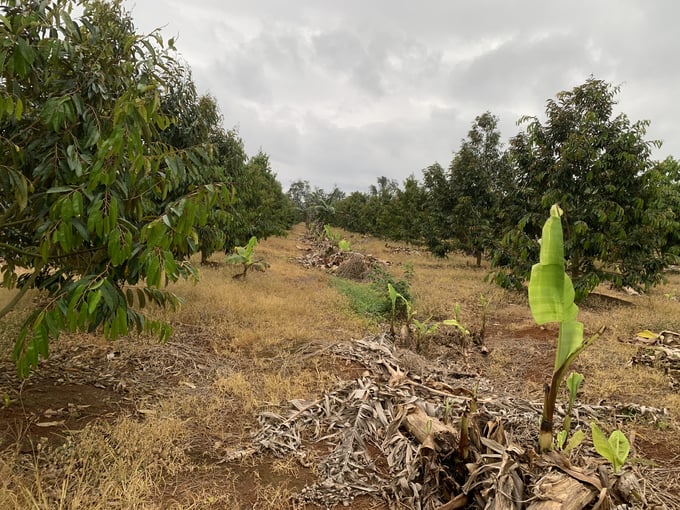
People's use of herbicides has made land degradation in the Central Highlands increasingly serious. Photo: Truong Hong.
The Central Highlands' land resources are highly vulnerable to degradation as a result of both natural and human factors. Human activities are the primary cause of degradation in agricultural and forestry lands.
In the Central Highlands, the most recent findings of a land degradation assessment show the following: Land that is neither severely nor lightly degraded comprises approximately 1.84 million hectares (33.7% of the natural territory). Approximately 2.5 million hectares (45.8%) of land are moderately degraded. Land that has been severely degraded accounts for approximately 576,000 hectares (10.5%). The land is extremely degraded, encompassing approximately 548,000 hectares (10%).
Forecasts suggest that the expansion of degraded land will result in severe repercussions, such as unsustainable agricultural and forestry production, if comprehensive solutions to preserve soil resources are not implemented.
Farmers have been applying chemical fertilizers and pesticides to intensify cultivation in order to achieve high yields and incomes on limited land areas, as the current agricultural concentration is on increasing output. Nevertheless, the degradation of agricultural and forestry land has been further exacerbated by the prolonged nature of intensive farming, which has failed to provide solutions for the protection, maintenance, and enhancement of soil fertility.
The Central Highlands are experiencing soil degradation in three critical areas: physical, chemical, and biological. These three components collectively constitute the foundation of soil health. This matter is presently a significant concern for soil and plant nutrition scientists, as well as the Ministry of Agriculture and Rural Development (MARD).
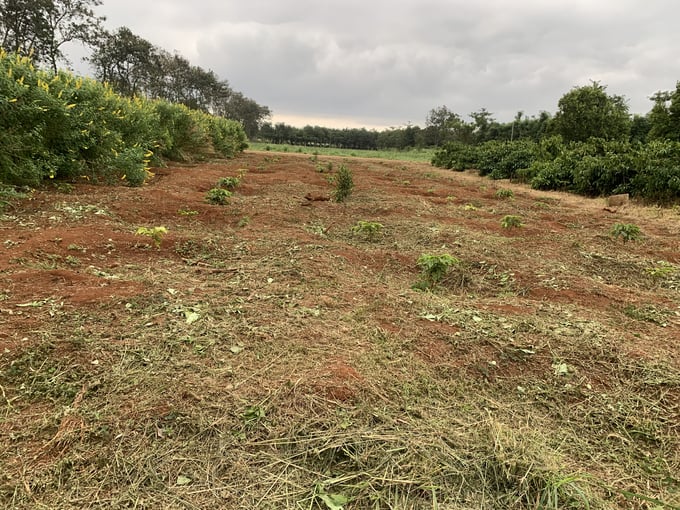
Severely degraded land prevents replanted coffee trees from growing. Photo: Truong Hong.
MARD has issued Decision No. 3458 to address this crisis, which authorizes the project "Improving Soil Health and Crop Nutrition Management Until 2030, with a Vision to 2050." The objective of the initiative is to improve soil health and stabilize it by implementing effective crop nutrient management. The objective of this initiative is to promote green, sustainable agricultural development that is resilient to climate change, increase the added value per unit of arable land (for both annual and perennial crops), and limit land degradation.
The current condition of soil degradation, particularly in terms of its physical properties, indicates that soil is becoming more compact and impermeable. The impact of raindrop momentum and precipitous slopes in hilly terrain is exacerbating erosion and surface runoff, as clay layers are accumulating in the cultivation zone and the soil structure is deteriorating. In comparison to 30 years ago, the mass density of soil has increased by 20.1–26.3%, while porosity has decreased by 10–20.2%. The soil's effective water content has decreased by 8.5–24.6%.
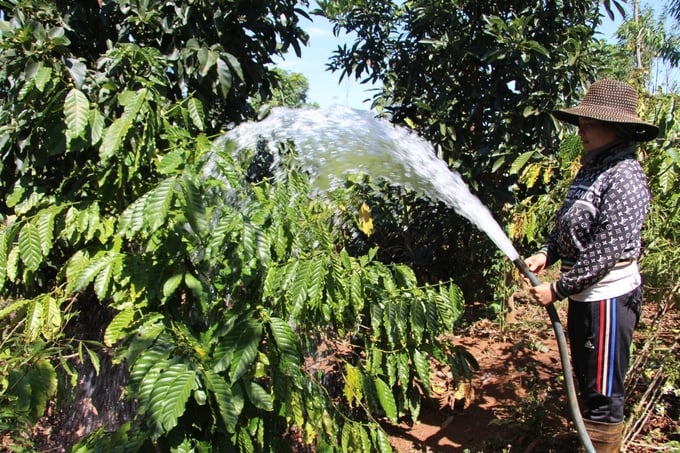
The ability to retain and supply water to crops is limited, so crops in the Central Highlands are increasingly vulnerable to water shortages and require increased irrigation, while water resources are increasingly depleted. Photo: NNVN.
The degradation of soil's physical properties results in a decrease in its capacity to retain and supply water to crops, leaving them more vulnerable to water shortages. At a time when water resources are becoming scarce due to climate change and the reduction of water-retentive forest cover, this necessitates increased irrigation. Compacted soil also impedes the development of root systems, which has a detrimental effect on the quality of crops, yield, and plant growth. Farmers must increase their investment in order to achieve the anticipated productivity, which has an impact on their income and economic efficacy.
Soil is becoming more acidic in terms of chemical properties, with pHKCl values decreasing by 0.9–1.5 units in comparison to 30 years ago. The pHKCl values of soil samples in 2023 and 2024 across a variety of cultivated areas ranged from 3.45 to 4.05, with 83% of the samples having a pHKCl value below 4. Acidic soil has a direct impact on the absorption of nutrients by plants, resulting in a 20–35% reduction in fertilizer efficiency. Consequently, producers are compelled to apply additional fertilizers. This further accelerates soil degradation and poses a risk of polluting soil and water environments, thereby increasing investment costs. Acidic soil also increases the toxicity of aluminum (Al) in basaltic soils, which has a detrimental impact on root development.
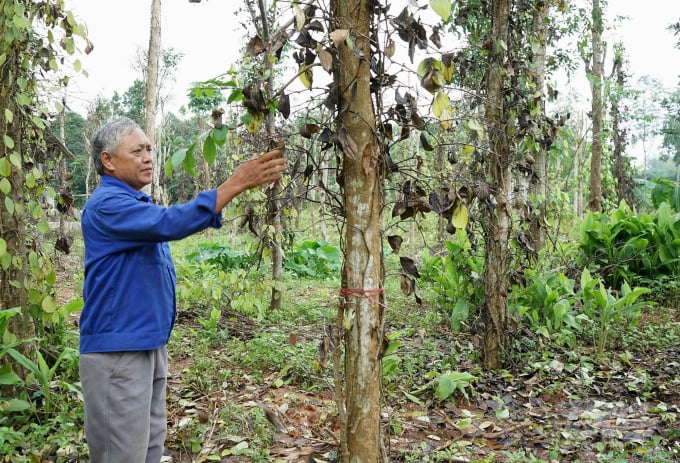
Degraded soil causes harmful organisms in the soil to grow and cause increased damage to crops. Photo: NNVN.
The growth and development of plants are impeded by the microbial a balance that is altered by acidic soil. Soil-borne diseases, including root rot in coffee, rapid and gradual wilt in pepper, and fruit rot in durian and cocoa, are the result of an increase in harmful microorganisms and a decrease in beneficial ones. In addition, soil quality is adversely affected by high soil acidity, which results in a substantial decrease in total cation exchange capacity (CEC), particularly effective CEC, which has decreased by 37.3–54.5%. This reduces the soil's capacity to furnish nutrients, thereby accelerating soil degradation and increasing nutrient loss, investment costs, and environmental pollution risks.
Furthermore, the Central Highlands' agricultural soils have been the site of micronutrient deficiencies, particularly zinc (Zn) and boron (B), as a result of the extensive but imbalanced use of chemical fertilizers in intensive farming. The analysis indicates that these micronutrients are absent in 55–71% of the samples. Zinc and boron deficiencies have an adverse effect on the flowering, pollination, and fertilization processes of agricultural commodities, particularly coffee, pepper, and durian. This results in a decrease in both yield and product quality.
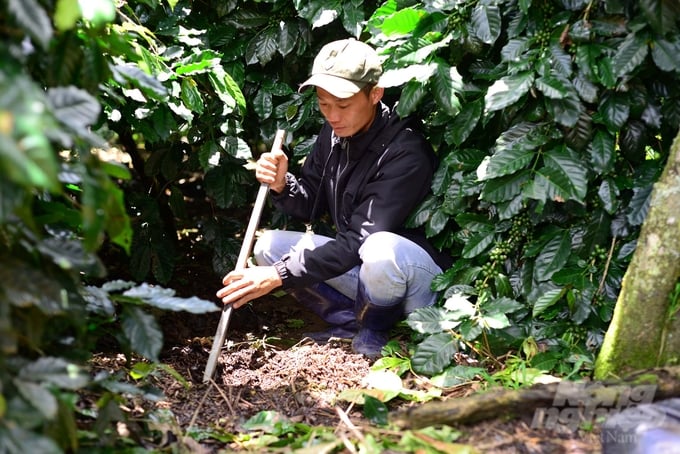
Organic farming solutions are an urgent requirement to restore and improve the Central Highlands soil. Photo: NNVN.
In the context of soil biology, the overuse of chemical fertilizers and pesticides has severely affected the biological properties of the soil. Soil that is acidic and compacted has resulted in a decrease in biodiversity, which includes beneficial microorganisms, insects, and earthworms. The prevalence of harmful soil organisms, including root-knot nematodes, root rot nematodes, cicada larvae, and a variety of fungi that cause root and fruit rots, has increased.
The reduction in nutrient availability, growth-promoting substances, and enhancements to soil's physical properties, such as porosity and water retention, has resulted from the disruption of organic matter decomposition due to the decline in beneficial microorganisms. The density of detrimental microorganisms in the soil has increased by 19–43% in recent decades, according to research.
Translated by Linh Linh

(VAN) The UNESCO Global Geopark revalidation of Non nuoc Cao Bang and the transition to a two-tier administrative model are presently undergoing a pivotal moment in Cao Bang, the northernmost province of Vietnam.
/2025/06/13/5330-2-004539_953.jpg)
(VAN) Changing policy mindset and removing investment barriers are urgent requirements to open up new development space for enterprises in the agricultural sector.

(VAN) The areas include the restoration of five million hectares of marine ecosystems.

(VAN) Dr. Le Van Nguyen, Director of the Institute of E-Commerce Management (ECM), emphasizes the potential for green development through the cultivation of fruit trees, particularly in provinces such as Son La.
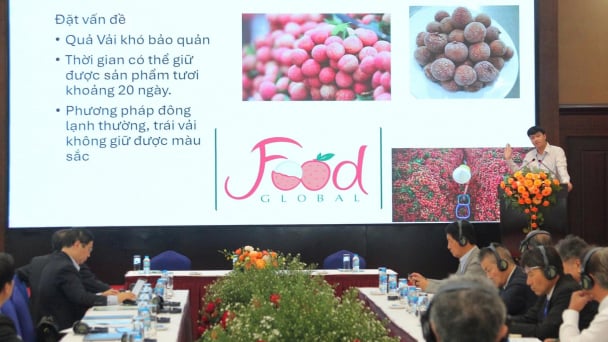
(VAN) VAAS and numerous Vietnamese enterprises have signed cooperation agreements with Japanese partners to promote agricultural technology and trade connectivity.
/2025/05/29/5625-12-214801_567.jpg)
(VAN) Provincial mergers in the Mekong Delta promise to streamline administration, expand inter-provincial raw material areas, and foster close linkages in agricultural value chains, benefiting both businesses and cooperatives.

(VAN) Merging Mekong Delta provinces contributes to the expansion of agricultural raw material areas, addressing previous constraints caused by provincial boundaries. Additionally, this expansion will reduce costs and strengthen linkages between businesses, cooperatives, and farmers.